Do You Remember These Incredible Cars From The ’70s?
We don’t typically look back on the 1970s as a decade of great cars and great car designs. Those years are largely defined by “Malaise Era” design, the oil crisis and tailpipe emission laws robbing cars of their horsepower.
However, there were some great cars, great car designs, and innovative technology that shaped the decade and continue to influence car design today. Wedge design, pop-up headlights, and the emergence of the supercar are just a few of the trends that hit the streets in the ’70s. From amazing concept cars to innovative technology and competition pedigree, here are 40 cars, concepts, and designs that shook up the status quo and made the 1970s bearable.
Volkswagen Golf GTI – 1976
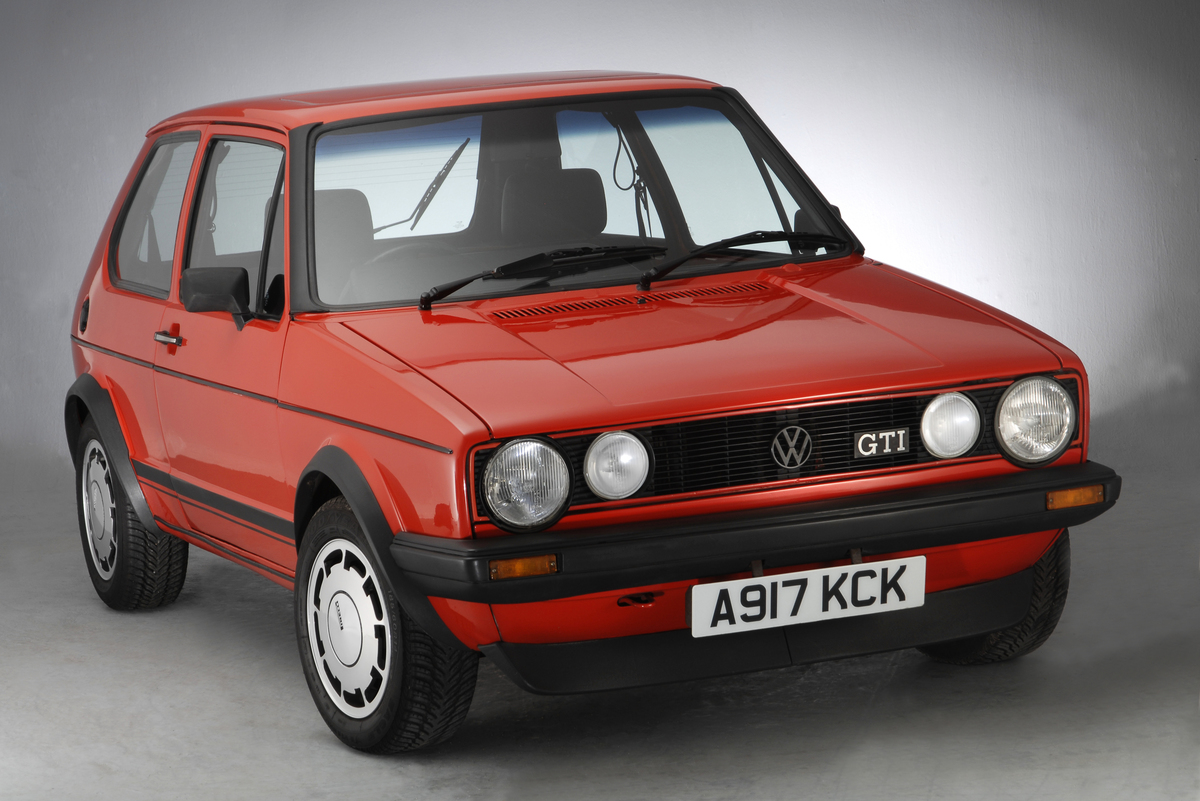
It doesn’t get any more iconic than the Volkswagen Golf GTI. The very first GTI hit the streets in 1976 and became the original “hot hatchback.”
This was a small, 2-door hatchback with a hot engine, subtle styling accents, and performance-tuned suspension that could run with the best sports cars of the day. The OG Golf GTI was a featherweight at only 1,786 pounds, and its 1.6-liter engine produced 108 horsepower. But it wasn’t power that was the GTI’s party-piece, it was the way the car drove. The GTI was a car that proved cheap hatchbacks could deliver a thrill, handle as well as elite sports cars, and still carry a ton of stuff.
Alfa Romeo Montreal – 1970

Alfa Romeos hold a special place in every petrolhead’s heart. They’re beautiful, the engines sound amazing, and they are ruinously temperamental. That appalling reputation for reliability made owning and driving an Alfa that much more exciting.
But you don’t buy an Alfa Romeo as a replacement for a Toyota Camry, you buy it because it’s an objet d’art. And one of the best looking cars in the 1970s was the Montreal. Powered by a 2.6-liter V8 making north of 200-horsepower, the Montreal used the drivetrain from a sports prototype race car and the chassis from the iconic Guilia GTV.
Lancia Stratos HF – 1973
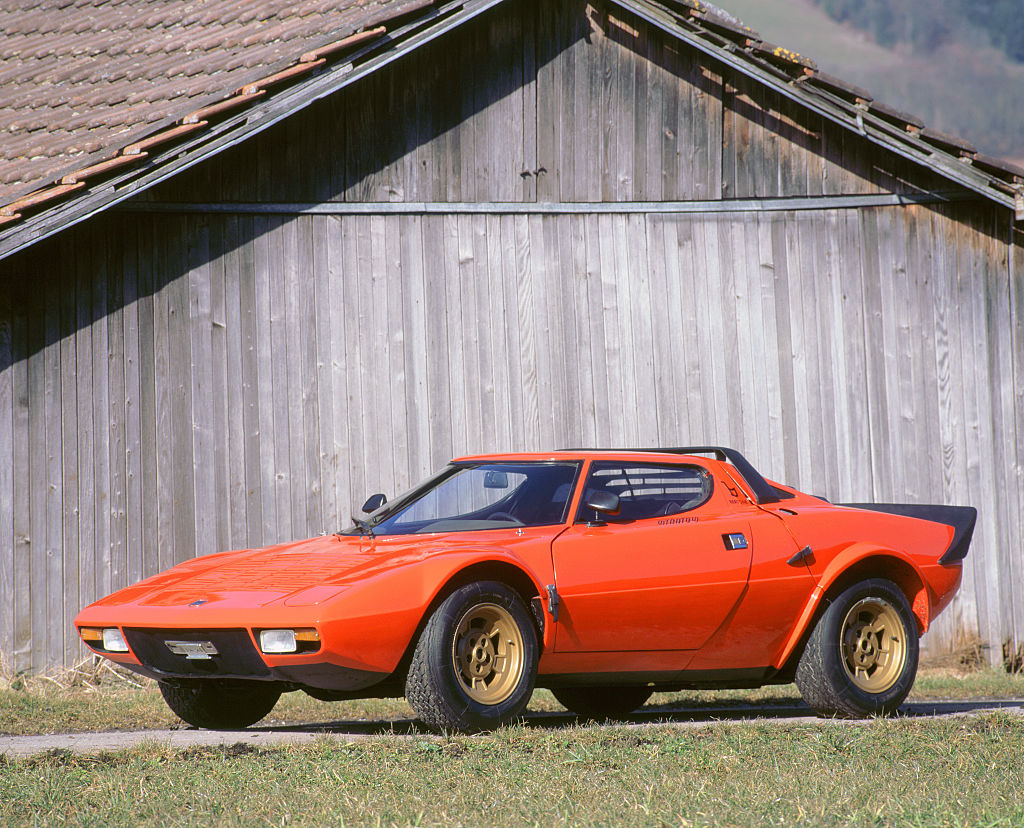
The Lancia Stratos HF is a near-mythical automobile. It’s a car born for a singular purpose, to win the World Rally Championship. Impossibly wedge-shaped and powered by a 2.4-liter V6 designed and built by Ferrari, the Stratos took the world of rally racing by storm and captured the championship in 1974, 1975, and 1976.
The extremely short wheelbase, mid-engined layout, and up to 320-horsepower in race trim made for an incredibly effective rally weapon. Styling of the car was done by Marcello Gandini, possibly the most influential car designer of the late 1960s and 1970s. Only 492 were made, making the Stratos extremely rare and desirable today.
BMW 2002 Turbo – 1973

Like Saab’s 99, BMW’s 2002 had been introduced in the late 1960s. The small 2002 is arguably the car that put BMW on the map of driving enthusiasts in the US and cemented the company’s reputation for building well-engineered, fun-to-drive cars.
In 1973, BMW fitted a 2002 Tii with a single turbocharger, flared the fenders, and added a deep chin spoiler and bespoke graphics to create the 2002 Turbo. At the time, it was one of the very first cars to come with a turbo, behind only GM in the 1960s. The legendary M10 four-cylinder engine, which was the basis for BMW’s 1400-horsepower F1 engine program, produces 170-horsepower, easily making it the fastest in the 2002 range.
Lancia Stratos Zero – 1970
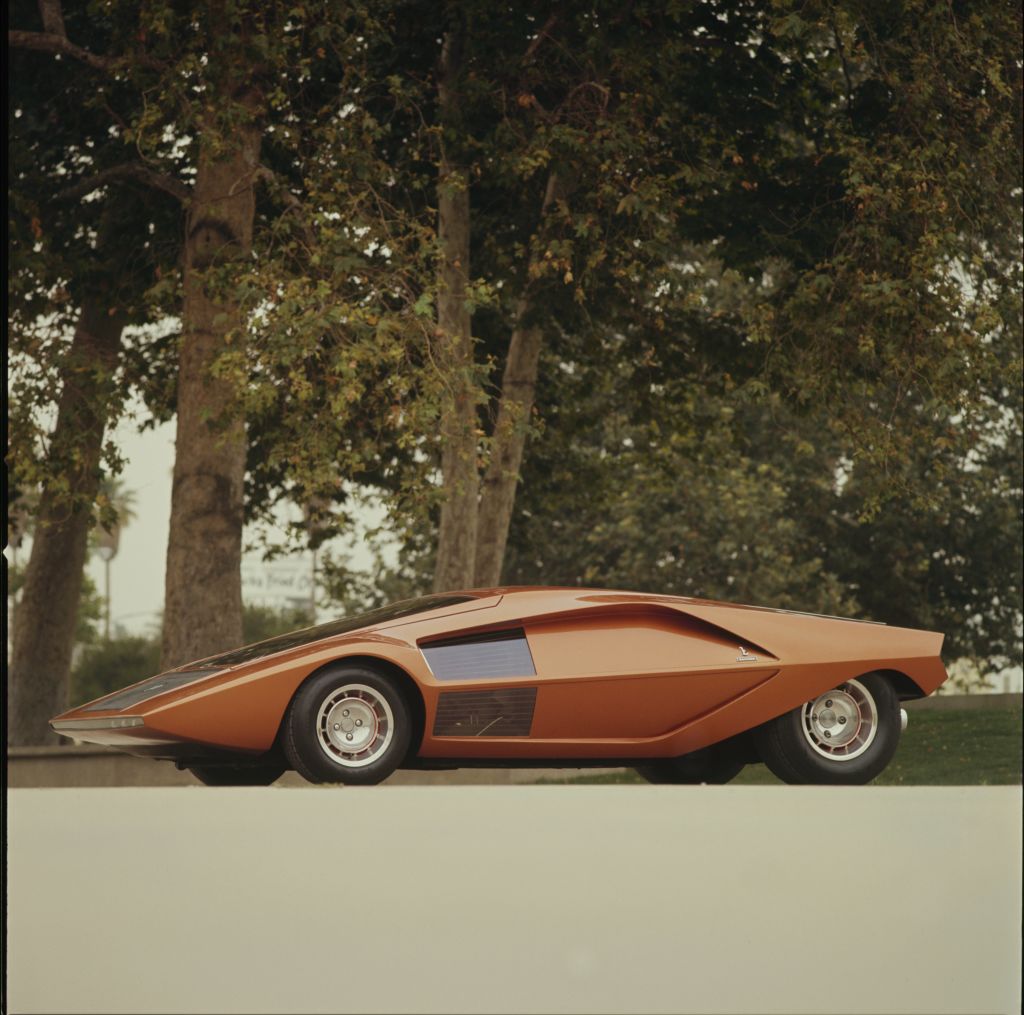
Sometimes a concept car comes along and defines an entire era of car design. Bertone’s masterpiece, the Lancia Stratos Zero, penned by super-designer Marcello Gandini, is that car. This design inspired the Lancia Stratos HF, the Lamborghini Countach, the Fiat X1/9 and pretty much every other wedge-shaped car of the 1970s.
Gandini and Bertone combined cutting edge automotive design with architectural and industrial design that defined the aesthetic of the 1970s. The Stratos Zero is impossibly low and is powered by a 1.4-liter V4 engine plucked from the Lancia Fulvia. If 1970s car design could be summed up in one concept car, it might be the Stratos Zero.
Ferrari 512 S Modulo – 1970
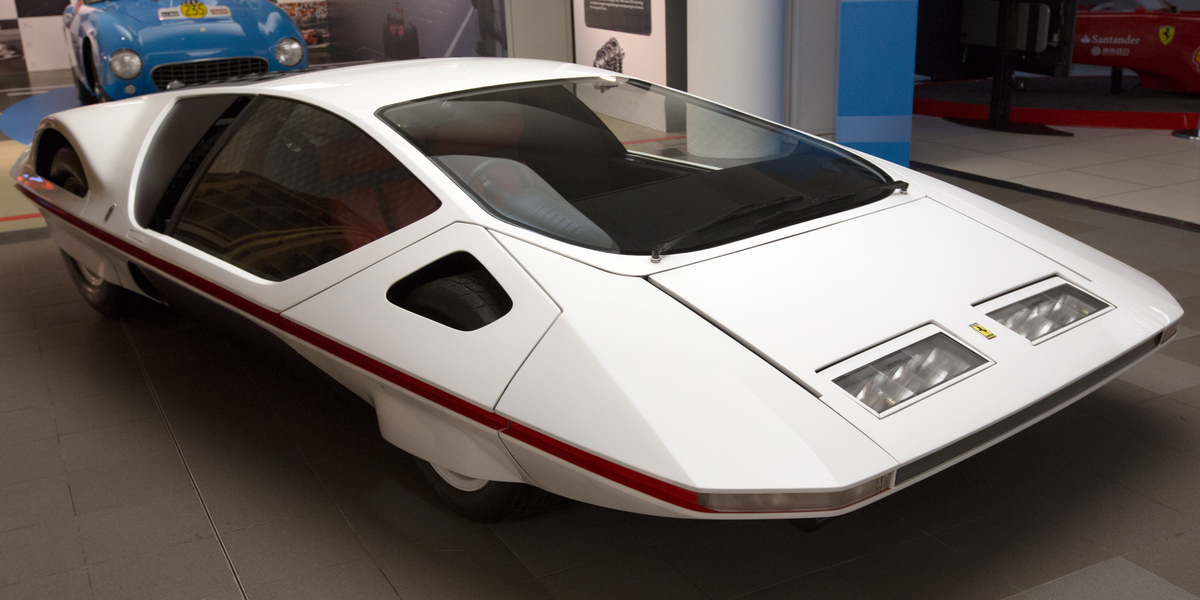
The 512 S Modulo is one of Ferrari’s most famous and outrageous concept cars. Designed by Pininfarina, the Modulo may look like a Star Trek shuttlecraft but is in fact built on one of Ferrari’s most famous race cars, the 512 S.
The 512 S was a sport prototype racing car specifically designed to win Le Mans and international racing championships. The Modulo uses the chassis and drivetrain from the race car and thanks to some tuning, produces 550-horsepower from the 5.0-liter V12. That amount of power in a car this small is going to make for “exhilarating” performance. Top speed is 220 MPH and the Modulo can hit 60 MPH from a standstill in 3 seconds flat.
Porsche 911 Turbo (930) – 1975
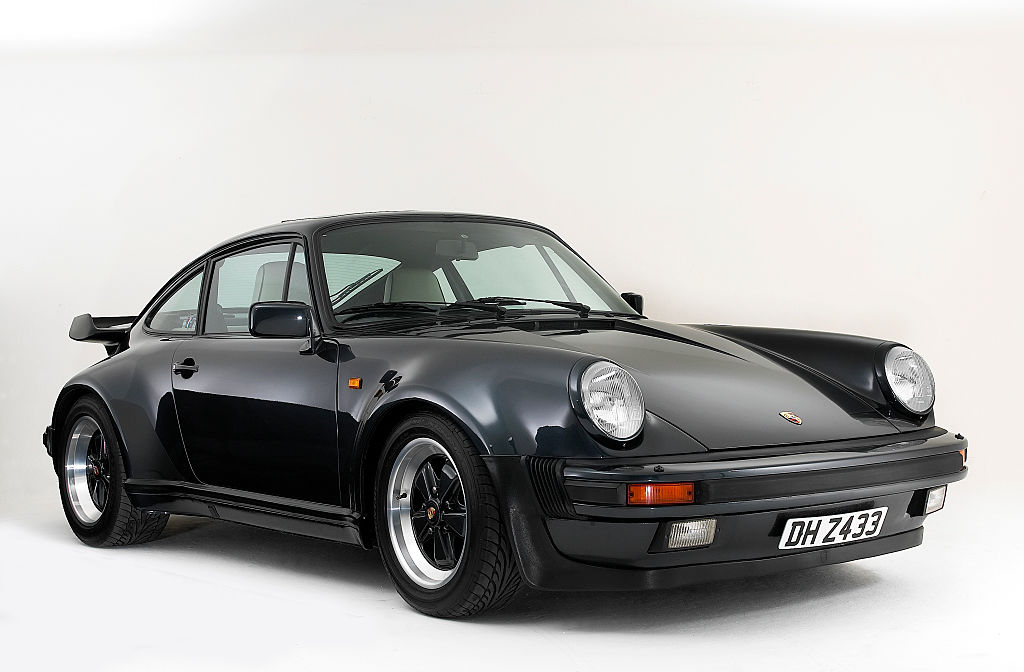
The ’70s was also a time of manufacturers experimenting and putting into production turbocharged performance cars. Today, the technology is commonplace, but back in the 1970s it was pretty rare on a street car.
Porsche’s 930 Turbo is the poster child for turbocharged performance cars. Today, it’s a benchmark by which most sports and GT cars are measured against, but when it debuted in 1975, it was a difficult handling performance machine with gobs of turbo lag and frightening speed. Big fender flares, a big wing, a big turbo, and big performance define the car that would go on to be a legend from the German marque.
Porsche 911 Carrera 2.7 RS – 1973
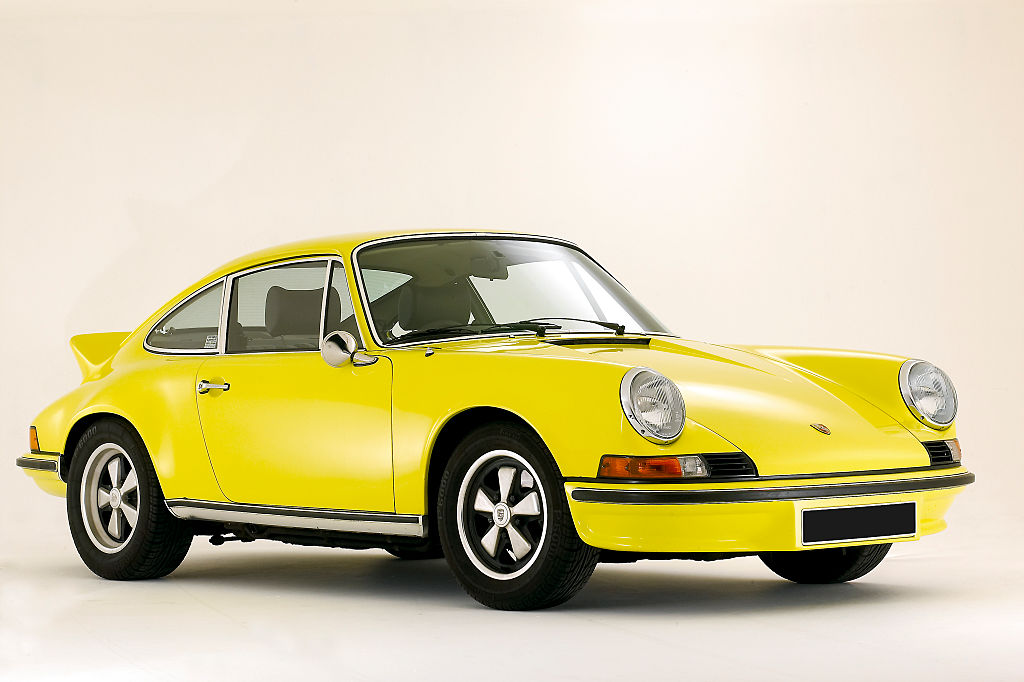
The Porsche 911 might be the single most recognizable car on the planet. It is THE sports car that everyone knows and is largely considered to be the benchmark for sports coupes. Every new sports car that comes along inevitably gets compared to the Porsche 911.
The engine may be in the wrong place and early cars had fearsome reputations for trailing-throttle oversteer, but despite those issues, the 911 is probably the single most successful racing car in the history of motorsport. One of the pillars of Porsche is the 1973 Carrera RS, a lightweight, stripped-down 911 meant for racing. And with the ducktail spoiler, it’s an icon of 1970s sports car design and engineering.
Chevrolet Aerovette – 1976

The origins of the mid-engine Corvette date back to the 1960s, but the concept that was initially approved for production was the 1976 Aerovette.
The concept started life being powered by a 4-rotor Wankel engine, similar to the now-famous Mazda rotary engines, which produced 420-horsepower. But we all know that it just isn’t a Corvette without a V8 and in 1976 the rotary was ditched in favor of a 400 cubic inch Chevrolet V8. Unfortunately, plans to put the Aerovette in garages across the country were canceled and we had to wait 44 years to see what a mid-engine Corvette was capable of.
Mercedes-Benz C111-11 D – 1970

The Mercedes-Benz C111 was a test bed vehicle for experimenting with new engine technologies, chassis technology, and luxury interior parts. It was never meant for production but remains today as one of the great cars that Mercedes-Benz produced.
The first C111 was produced in 1969, but the other 15 cars were all made in the 1970s, so we think this is really a ’70s car. 13 cars were fitted with 3 and 4 rotor Wankel engines, 2 cars were fitted with diesel engines and the final C111 was built with a monster twin-turbocharged V8 that produced over 500 horsepower. That final car, the V8 beast, set a speed record at the Nardo Test Track when it averaged 250.958 MPH over a single lap.
Jaguar XJS – 1975

In 1975, Jaguar presented the follow-up to the mighty E-Type, the XJS. Based on the XJ sedan, the XJS was initially offered as a coupe with a convertible version finally arriving in the 1980s. Series 1 cars were all powered by a 5.3-liter V12 engine with 242-horsepower. The venerable Jaguar straight six-cylinder engine wasn’t offered in the XJS until 1983.
The XJS is a fairly conservative but stylish design that’s aged exceptionally well. The most notable styling feature is the flying buttresses, an element added for aerodynamic efficiency. The big Jag Coupe is less of a sports car like the E-Type and more of a “gentlemen’s express.” This is a long-distance GT car made for comfort and style.
BMW 3.0 CSL “Batmobile” – 1972
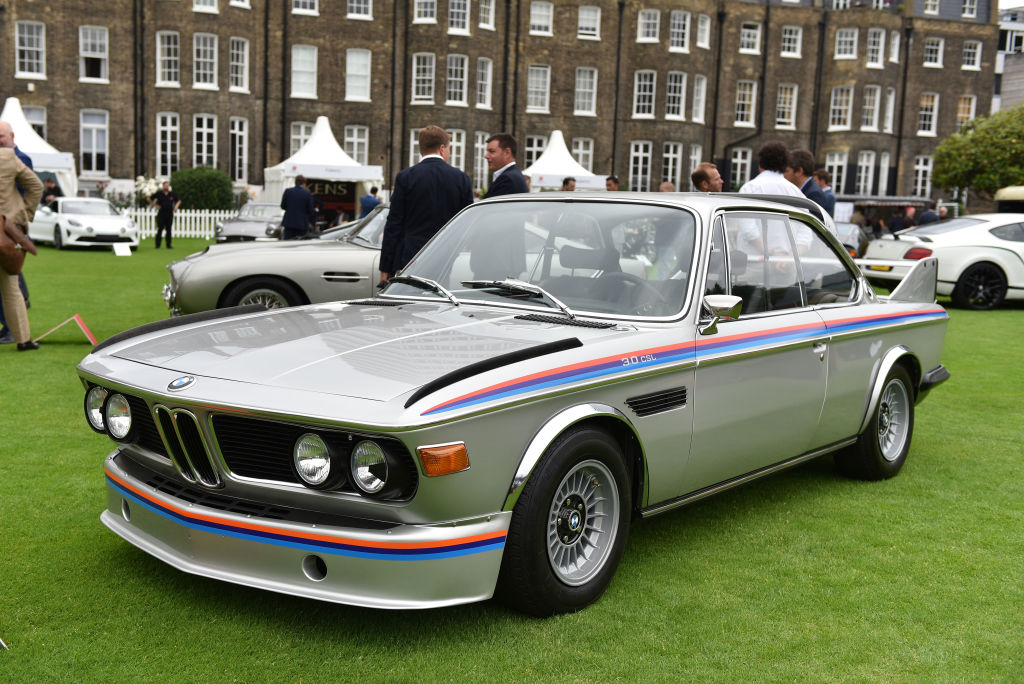
In 1972, BMW needed a sports car that was capable of taking on the European Touring Car Championship. The motorsports team in Munich turned to the sublime E9 coupe and created the 3.0 CSL (coupe sport light). Powered by a 3.0-liter straight six-cylinder engine that produced 200 horsepower, the mighty CSL was built to take on the best cars and racetracks in the world. In 1973 the CSL received its now-famous flares, fins, and wing which earned it the nickname “Batmobile.”
In racing trim, the CSL dominated touring car championships in the mid to late 1970s. Group 2 cars were tuned to produce 400 horsepower and the Group 5 cars were fitted with a turbo to juice horsepower up to 750.
Plymouth Superbird – 1970
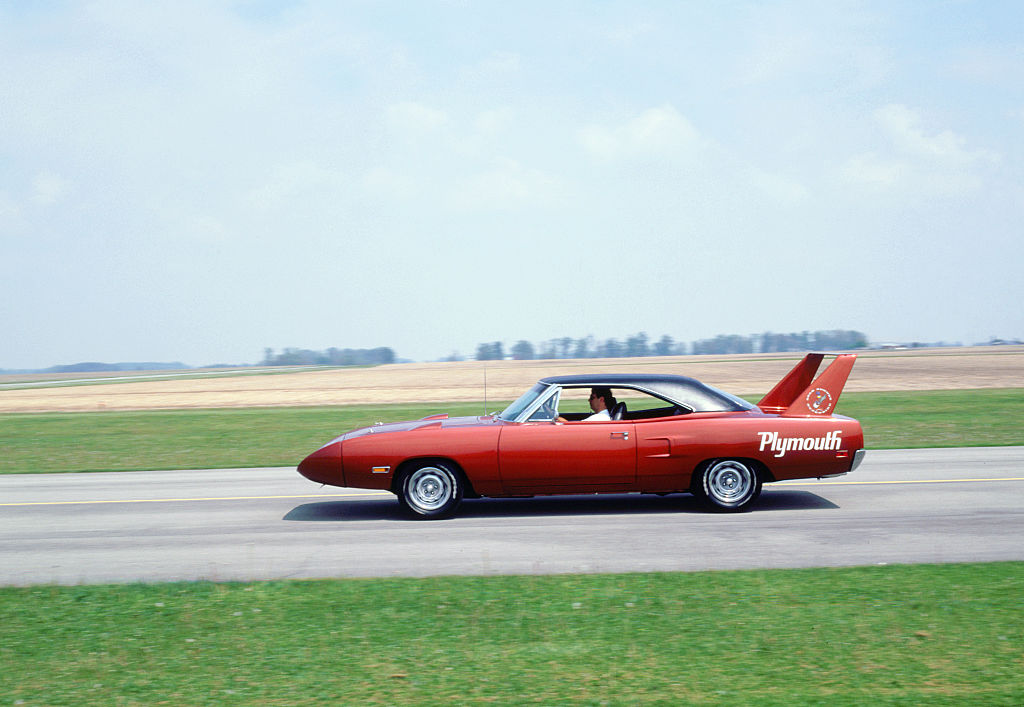
Eighteen and a half feet long, the Plymouth Superbird is a lot of car. A lot of hood, a lot of wing, a lot of horsepower, and a lot of performance.
The story of the creation of the Plymouth Superbird is well known. It was designed to maximize the rules in NASCAR and lure Richard Petty back. The big winged coupe dominated the race season and in race trim could hit 200 MPH. Rarest of the rare is the Superbird equipped with the 426 HEMI V8, a 425 horsepower brute that could launch the massive car from 0 to 60 MPH in 5.5 seconds.
Maserati Bora – 1971
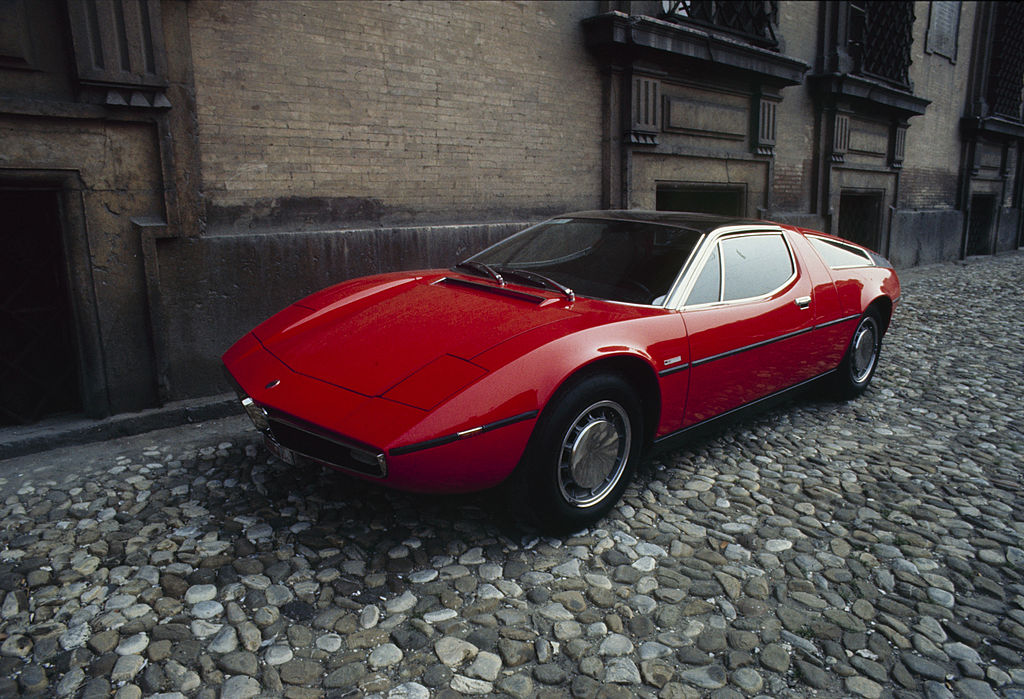
Officially introduced at the Geneva Auto Salon in 1971, the Bora was Maserati’s first mid-engined supercar designed to compete against Lamborghini, De Tomaso, and Ferrari.
The Bora was offered with a choice of two V8 engines, a 4.7-liter with 310 horsepower and a 4.9-liter with 320 horsepower. The later was potent enough to get the mid-engine coupe up to 177 MPH. The wedge shape is more understated on the Bora, as the car was designed at Italdesign and was meant to be classy, practical, and comfortable for everyday use. This was restrained performance for the distinguished gentleman.
De Tomaso Pantera – 1971
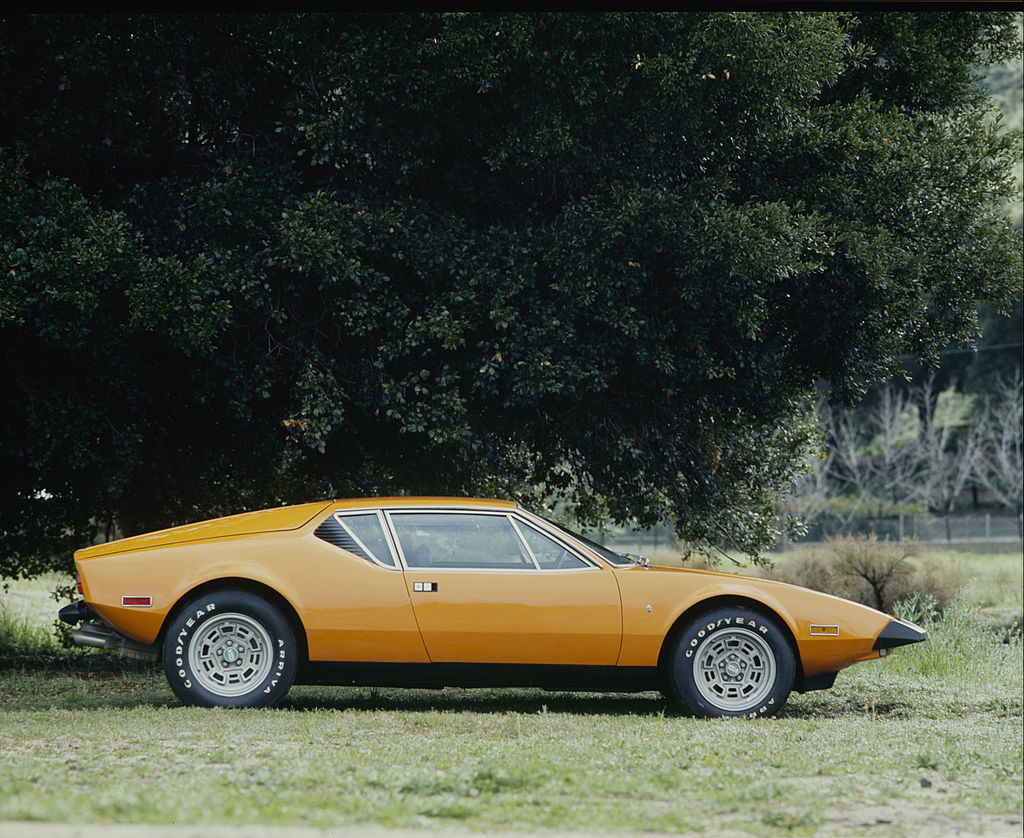
The De Tomaso Pantera (Italian for panther) enjoyed one of the longest production runs of any Italian mid-engine supercar. Launched in 1971, the Pantera remained in production until 1992 with over 7,000 being built.
That sharp wedge shape was on point at the time of its debut. Penned by famed automotive designer Tom Tjaarda, the Pantera is a classic shape that remains attractive to this day. Powered by Ford’s 351 Cleveland V8, it was initially capable of 330 horsepower which gave the car a top speed of around 160 MPH with sprints to 60 MPH coming in 5.5 seconds.
BMW M1 – 1978
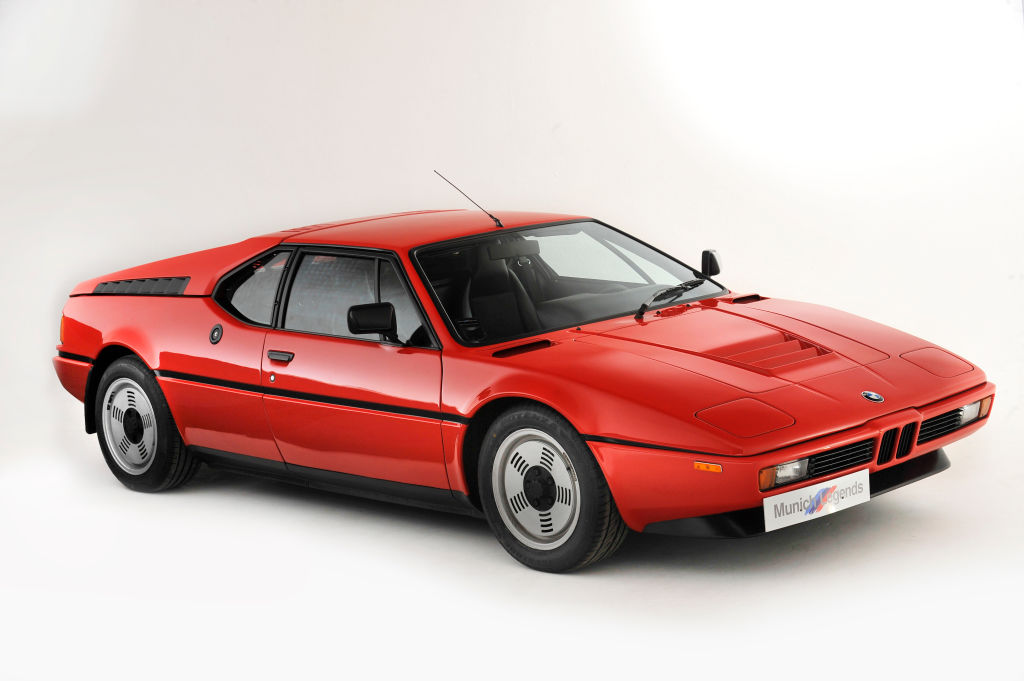
The M1 was BMW’s first mid-engine supercar, a car specifically built to meet the homologation rules for racing and was designed, developed, and built by some of the greatest companies and figures in motorsport.
The chassis was originally specced and designed by Lamborghini and the tubular space frame was designed and developed by world-famous racecar engineering firm Dallara. Styling was handled by design legend Giorgetto Giugiaro of Italdesign and the mechanicals were built by BMW. The gem of an engine was developed by BMW Motorsports and came in the form of a 3.5-liter straight six-cylinder with individual throttle bodies, BOSCH mechanical fuel injection and churned out 273 horsepower. Good enough for a 162 MPH top speed.
Stutz Blackhawk – 1970
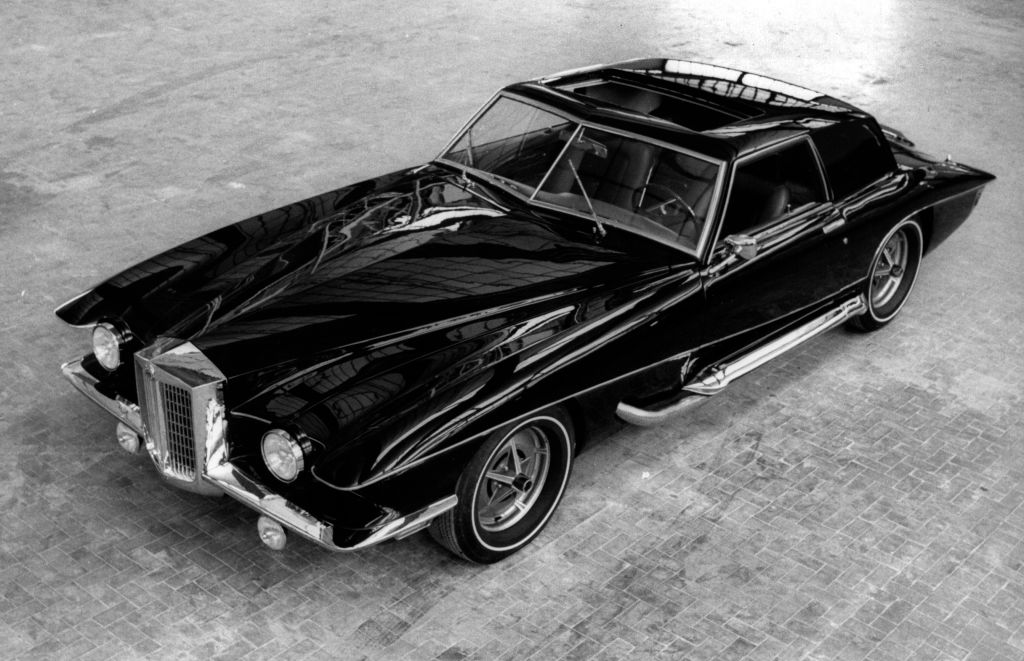
For some, the 1970s represents a decade of disco, decadence, and polyester. There is no better car to personify that side of the era better than the Stutz Blackhawk. Over-the-top is a term that is far too mild to accurately describe the 19-feet of automotive excess that is the Blackhawk.
The Blackhawk is based on the Pontiac Grand Prix’s running gear and featured custom hand-built bodywork by Carrozzeria Padane in Italy. A large number of engines could be had for the car, but it was the outrageous ultra-luxury interior that was the star of the show. Gold-plated trim, maple and redwood dash components, Connelly leather, mink carpet, and even a liquor cabinet in the back seat. Elvis owned four… need we saw any more.
Maserati Boomerang – 1971
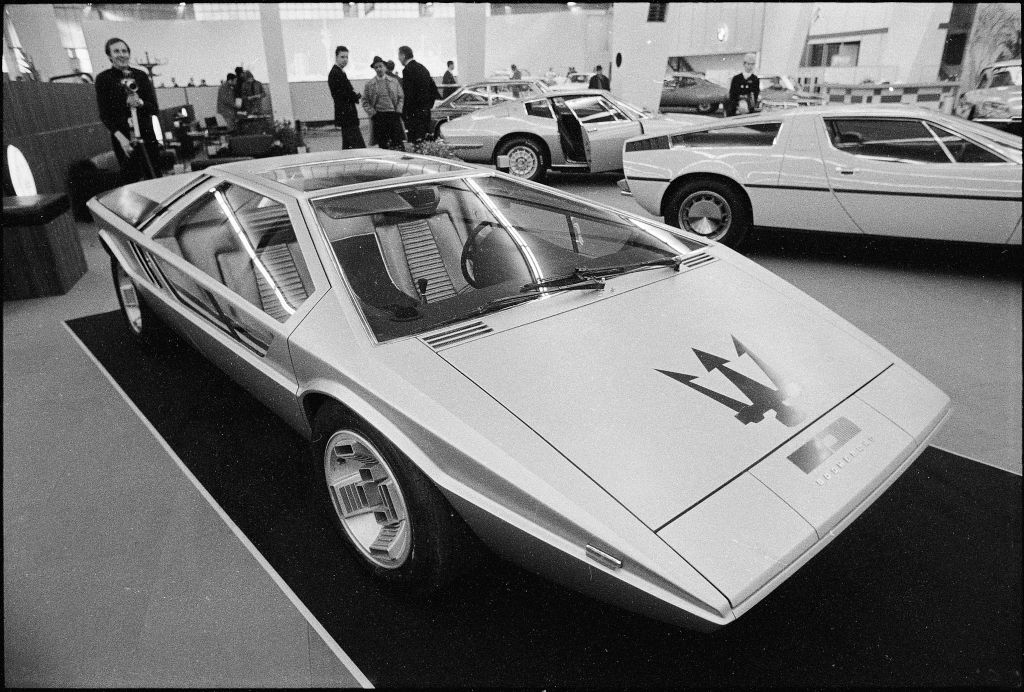
Styled by Giorgetto Giugiaro at Italdesign, the 1971 Maserati Boomerang was meant to be a one-off concept car showcasing a new design language for upcoming models. The Boomerang would influence many production cars including the Maserati Bora, Lancia Delta, Lotus Esprit, and the DMC DeLorean.
Power came from a 4.7-liter V8 pushing out 310 horsepower. A 5-speed manual transmission sent power to the rear wheels despite the car never being intended to hit the road. The interior was just as wild as the exterior, as the dashboard was circular and within the steering wheel, which rotated around it.
Lotus Esprit – 1976

Simplify and add lightness, goes the Lotus mantra. You don’t need a massive engine and huge horsepower with a car that’s lightweight. And that’s exactly what the Esprit is, a lightweight sports car that puts a premium on handling prowess and driving enjoyment.
Weighing in at only 1,984 pounds, the Esprit made excellent use of a 2.0-liter four-cylinder engine with 160 horsepower. It couldn’t match the top speeds of similar cars from Ferrari and Lamborghini, but it could keep up with them through the corners. Styled by Italdesign, the Esprit is known by many as James Bond’s ride in the film The Spy Who Loved Me.
NASA LRV “Moon Buggy” – 1971
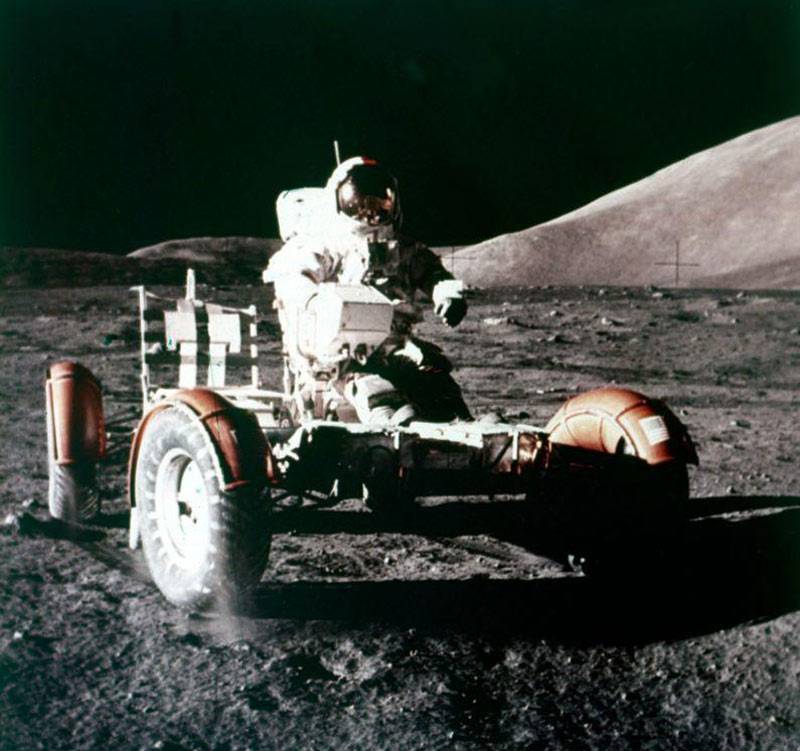
The 1970s were an amazing time for NASA and space exploration. Apollo astronauts had just landed on the moon and the subsequent missions would need to see more, explore more and study more of the moon’s surface.
Enter one of the greatest vehicles ever created, NASA’s LRV (Lunar Roving Vehicle). It weighs just 460 pounds (on Earth) but could carry over 1,000 pounds of astronauts, gear and moon rocks. The wheels are made of spun aluminum with woven steel and titanium tread. Each wheel has an electric motor and the LRV was able to hit a top speed of 11.2 MPH on the Moon. This incredible car was used on the Apollo 15, 16, and 17 moon missions.



